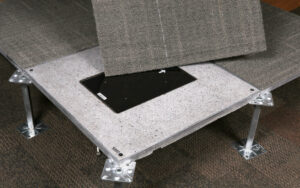Beautiful, Inconspicuous, or Both? The Wi-Fi Antenna Evolution

Most wireless users want service everywhere, and some expect it everywhere. A few want to know or see how it happens. In the end, for most of us, wireless service is like air — seemingly everywhere and we forget it’s there until we don’t have it. One of the myriad network elements necessary to make coverage ubiquitous is the antenna. Reflecting on what drives its evolution will hopefully help us appreciate what it does and the things behind the modern and future antenna design.
The Evolution of Inconspicuous Wi-Fi
In the late 20th century, arguably, coverage was the focus. Cellular and Wi-Fi networks were small and had few users, so coverage was key to building relevance and usefulness. Once popularity increased, coverage was still important, but then capacity became an additional, and major focus. More people subscribed to a network means more devices fighting over a limited spectrum. To address popularity, coverage, and congestion concerns, more antennas were deployed. Users quickly started to realize how many antennas, both outdoor and indoor, are required to support the wireless appetites across all the spectrums we consume. Users noticed the antennas were changing the landscape and décor, and deployments were increasingly faced with pushback from communities that did not want technologies to obstruct their surroundings. They also did not want antennas everywhere, but they still expected omnipresent coverage — a dichotomy that causes headaches for many network architects and wireless professionals to this day. Subsequently, the next evolution for antennas became aesthetics. The two general options for antennas are to either be attractive or at least not detract from the surrounding aesthetic (i.e. be inconspicuous).
Aesthetically Innovative
Innovation helps prevent a choice between network and aesthetics. Ventev provides solutions that keep your network present without providing visual cues to users that an antenna is even in the same room. Find out how these modern Wi-Fi antennas can improve your network.

